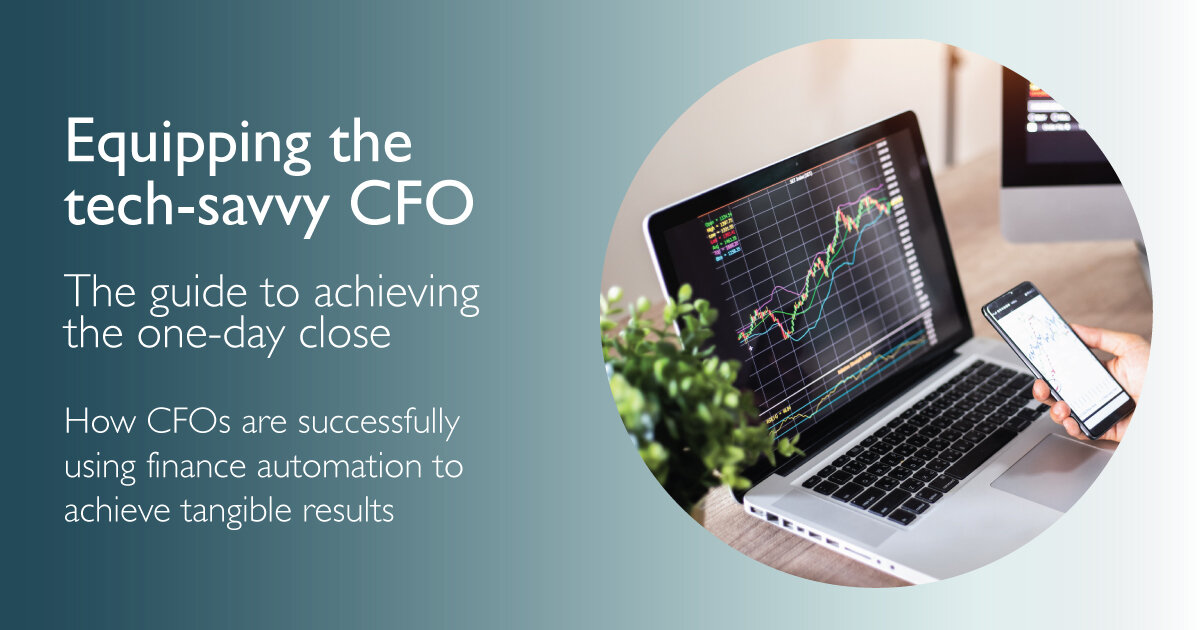Michael Brink explains how finance professionals can benefit from automating their financial close.
Financial close automation is defined as the improvement of financial processes and controls across all aspects of finance. It serves to automate and enhance management process controls and analytics for all finance processes, thereby enabling finance to increase efficiencies and effectiveness.
The finance office is the powerhouse of any business. Why? Because it manages the money. Almost every function of the department is critical to the business, from planning, organising, and auditing, to controlling the company’s finances and preparing financial statements. The entire success of the enterprise rests on the shoulders of the office of finance.
However, the fact that it is the crucial enabler in any business is the main reason why it is necessary to assess if you are in control of day-to-day processes. Questions need to be asked: for example, do you have:
- Full control of all your financial processes?
- More than just manual controls over errors?
- Complete control of all data feeds?
- Intelligent control on reporting?
- Total control of compliance within the processes?
Fiscal period closure panic – be it monthly, quarterly, or half yearly
This usually involves a panic-stricken rush to close the organisation’s books at the end of whatever may be the reporting period. Every month, quarter, half-year or year-end, staff resources are absorbed managing the process. Cumulative unresolved transaction, end-to-end process and transparency issues plus manually driven tasks such as data-transferring or validation, serve to compound the matter. It all boils down to one thing – it’s costing your business time and money.
Management of critical enterprise processes has become a pressing challenge with too many staff members being tied up in finding and diagnosing system errors. The result is a perception of poor quality service on behalf of customers who are subjected to recurring errors and delays, which are now affecting critical processes. This is where finance automation (FA) comes into its own.
FA facilitates the creation, monitoring and execution of finance business processing quickly and easily, across on-premise, as well as private/public clouds. It eliminates errors and delays from end-to-end processes. Moreover, interconnected finance data flows to the front-line more quickly, providing greater control and freeing up time and resources to devote to greater financial analysis.
FA supports the full spectrum of finance from intelligent interface management, period close of sub-ledgers through general ledger, distinct financial process improvements in payment batches, Dunning, and automated reconciliations between ledgers and financial consolidation, reporting and planning.
The benefits of FA in a nutshell:
- Close on time – every time
- Accurate and consistent result
- Create time for more financial analysis
- Reduce stress in the finance department.
Research
Research into the experiences of leading corporations examines the key capabilities organisations need to produce faster, more accurate financial close and accounting processes that deliver on time, every time. This survey serves to highlight the experiences of more than 200 global companies over the past 10 years.
It reveals how the finance, business application and IT departments involved in these processes are successfully using FA to achieve tangible results, including:
- Improving financial reporting timing by 70 percent whilst reducing manual efforts by 90 percent.
- Introducing 100 percent control over the financial close and accounting processes.
- Increasing the number of books closed per month from 10 to hundreds with 80 percent fewer resources.
Single point of control and coordination
The accounting processes of most large organisations span multiple responsibilities and systems. A typical financial close process can consist of more than 100 steps running across possibly six different systems. Multiply this by the number of operating units and subsidiaries involved, and the number and complexity increases significantly.
Add to that the complexity of the separation of duties across different departments and regional operating subsidiaries, and one is confronted with an extensive co-ordination effort where each step is exposed to possible errors and delays that each have significant impact on the overall process delivery.
Centralised process management that can execute and control procedures in ERP systems such as SAP or Oracle, non-ERP financial applications, and other data management technologies is critical to regaining control of the financial close process.
To achieve this, certain capabilities are required as follows:
Each step of the financial close and other accounting process must be executed from a single platform. This eliminates latency between steps and removes a significant amount of manual intervention.
- Management visibility is required across your entire financial close and accounting processes (including operating unit and subsidiary subprocesses). This allows management to track process execution and take immediate action as exceptions occur.
- The ability to define service-level milestones across all financial close and accounting processes is crucial. These milestones and possible issues should be visible to all stakeholders so problems can be proactively identified and resolved.
Financial processing needs to be standardised across the group
It is essential to standardise financial processes across operating units. Consistent processing aids the closure process and provides accuracy across the group accounts. As businesses expand, so too does the complexity of managing financial accounting processes. This is a fact with which financial professionals will be very familiar.
As new operating units and subsidiaries appear, businesses’ financial processes need to scale and incorporate new capabilities. Standardising, streamlining and dynamically expanding the scope of the financial close and accounting processes across multiple operating units and subsidiaries, ensures the business is consistent in operation and remains in control of its finance processes, while it scales and adjusts to change.
In my second article I will expand on the critical capabilities necessary to achieve this.



